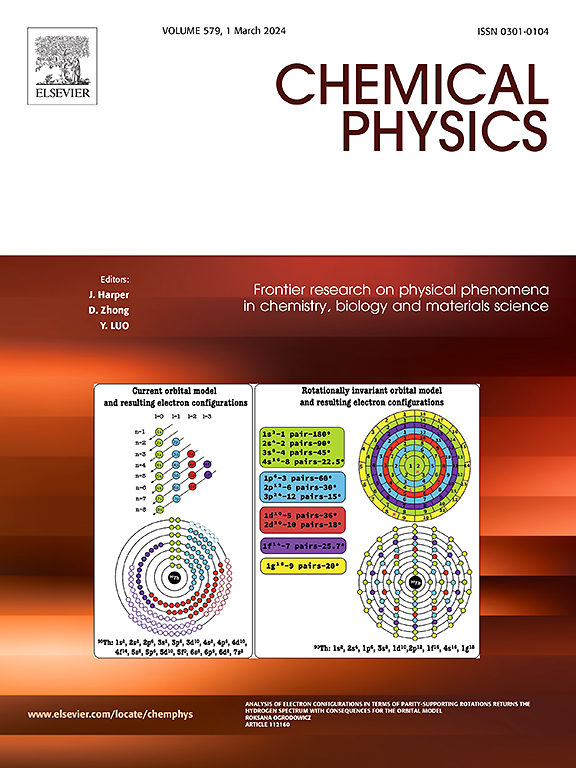Europium doped silicon nanoparticles for “turn-on” ratiometric fluorescent discrimination of leucine enantiomers
IF 2
3区 化学
Q4 CHEMISTRY, PHYSICAL
引用次数: 0
Abstract
d-leucine has potential significance in preventing epilepsy seizures and diagnosing diabetes, so detecting d-leucine, especially in its racemate is crucial. In this paper, chiral fluorescent silicon nanoparticles Eu-LSiNPs were synthesized at room temperature and a dual emission system Eu-LSiNPs/TC based on the “antenna effect” between Eu3+ and tetracycline (TC) was developed. Eu-LSiNPs/TC showed two distinctive emission at 510 nm and 616 nm, its fluorescence at 510 nm can be significantly enhanced while the signal at 616 nm can be decreased by d-leucine, whereas l-leucine has less impact on the fluorescence intensity of Eu-LSiNPs/TC, indicating that it can be used as an effective “turn-on” ratiometric fluorescent probe for discriminating leucine enantiomers. The sensitivity of Eu-LSiNPs/TC towards d-leucine is 18.4-fold higher than that of l-leucine. Compared with single emission nanosensors, Eu-LSiNPs/TC showed better stability and repeatability. Lastly, its chiral discrimination mechanism towards Leu enantiomers was systematically investigated.
用于亮氨酸对映体“开启”比例荧光鉴别的铕掺杂硅纳米颗粒
d-亮氨酸在预防癫痫发作和诊断糖尿病方面具有潜在的意义,因此检测d-亮氨酸,特别是其外消旋体的含量至关重要。本文在室温下合成了手性荧光硅纳米颗粒Eu-LSiNPs,并基于Eu3+与四环素(TC)之间的“天线效应”构建了Eu-LSiNPs/TC双发射体系。Eu-LSiNPs/TC在510 nm和616 nm处表现出两种不同的发光特性,其510 nm处的荧光显著增强,616 nm处的信号被d-亮氨酸降低,而l-亮氨酸对Eu-LSiNPs/TC的荧光强度影响较小,表明它可以作为一种有效的“开启”比例荧光探针用于辨别亮氨酸对映体。Eu-LSiNPs/TC对d-亮氨酸的敏感性是l-亮氨酸的18.4倍。与单发射纳米传感器相比,Eu-LSiNPs/TC具有更好的稳定性和重复性。最后,系统地研究了其对亮氨酸对映体的手性辨别机理。
本文章由计算机程序翻译,如有差异,请以英文原文为准。
求助全文
约1分钟内获得全文
求助全文
来源期刊

Chemical Physics
化学-物理:原子、分子和化学物理
CiteScore
4.60
自引率
4.30%
发文量
278
审稿时长
39 days
期刊介绍:
Chemical Physics publishes experimental and theoretical papers on all aspects of chemical physics. In this journal, experiments are related to theory, and in turn theoretical papers are related to present or future experiments. Subjects covered include: spectroscopy and molecular structure, interacting systems, relaxation phenomena, biological systems, materials, fundamental problems in molecular reactivity, molecular quantum theory and statistical mechanics. Computational chemistry studies of routine character are not appropriate for this journal.
 求助内容:
求助内容: 应助结果提醒方式:
应助结果提醒方式:


